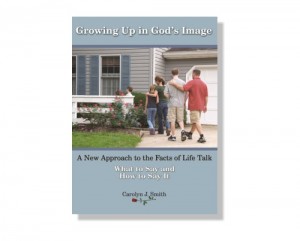 There is something about teaching one’s children about the facts of life that inspires fear in the hearts of parents everywhere. When that day came for my boys and me, I nervously searched my local library for an appropriate book (many I found were clearly not appropriate from a moral standpoint), sat down on the couch with the two of them, read, and answered questions as we went. I also did my best to include a moral component. I know it was only the first of many conversations and it was painful for all three of us, but at least it covered the basic biological aspects of procreation.
There is something about teaching one’s children about the facts of life that inspires fear in the hearts of parents everywhere. When that day came for my boys and me, I nervously searched my local library for an appropriate book (many I found were clearly not appropriate from a moral standpoint), sat down on the couch with the two of them, read, and answered questions as we went. I also did my best to include a moral component. I know it was only the first of many conversations and it was painful for all three of us, but at least it covered the basic biological aspects of procreation.
I wish I had a copy of the new book by Carolyn J. Smith at my disposal when I faced that initial conversation. Growing Up in God’s Image: What to Say and How to Say It includes all the information any Catholic parent will need to pass on a biologically informative, morally sound take on the changes of puberty and the beauty of sexual intercourse.
Smith has been married for forty-two years and is a mother of ten children and grandmother of fifteen. She created a Family Life curriculum at a private school in the Baltimore area and used Growing Up in God’s Image as a tool in her own parish to help guide parents through the discussion of the facts of life with their children.
Smith divides the text into three main sections, all focused on love: Spousal Love Reflects the Love of the Trinity, Spousal Love Reflects the Love of Christ for Each One of Us in the Eucharist, and Spousal Love is Sacramental Love. The book is rooted in Scripture. the Catechism, and Blessed Pope John Paul II’s Theology of the Body. She emphasizes the self-giving nature of love, and the importance of co-creating with God in the conception of children. She also discusses modesty and the importance of caring for one’s body.
It includes all the necessary biological facts, including diagrams, as well as the very important spiritual aspects of marital relationships and intimacy. For older children, there is an additional section on “Thoughts to Consider” which delves into these topics on a deeper level. It also includes a subsection on dating, which offers much good advice, but which some modern parents might find a bit old-fashioned. For example, Smith suggests that only on very rare occasions should a girl ever call a boy. Parents and teens can certainly make decisions together regarding dating rules, but this guide offers a good start for the conversation.
Smith fully admits that she presents the ideal of human sexuality in this book. Like the Theology of the Body itself, it is a goal that very few of us every perfectly achieve. As she states, “We give our children God’s way, pure and untouched. Then, we teach our kids to strive to be their best, with God’s help!”
Growing Up in God’s Image should be in the parenting toolbox of every Catholic parent of tweens and teens to help guide those important and nerve-wracking conversations on human sexuality.



